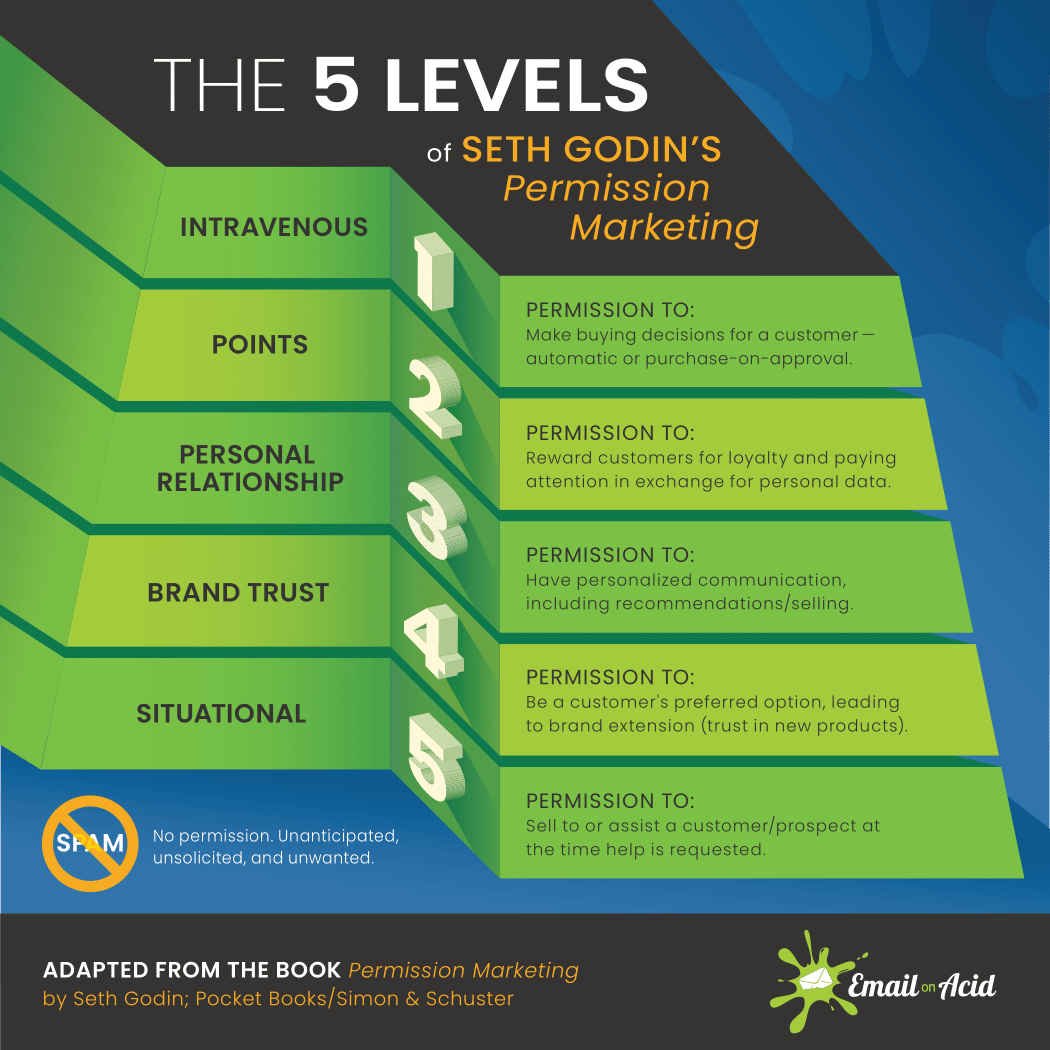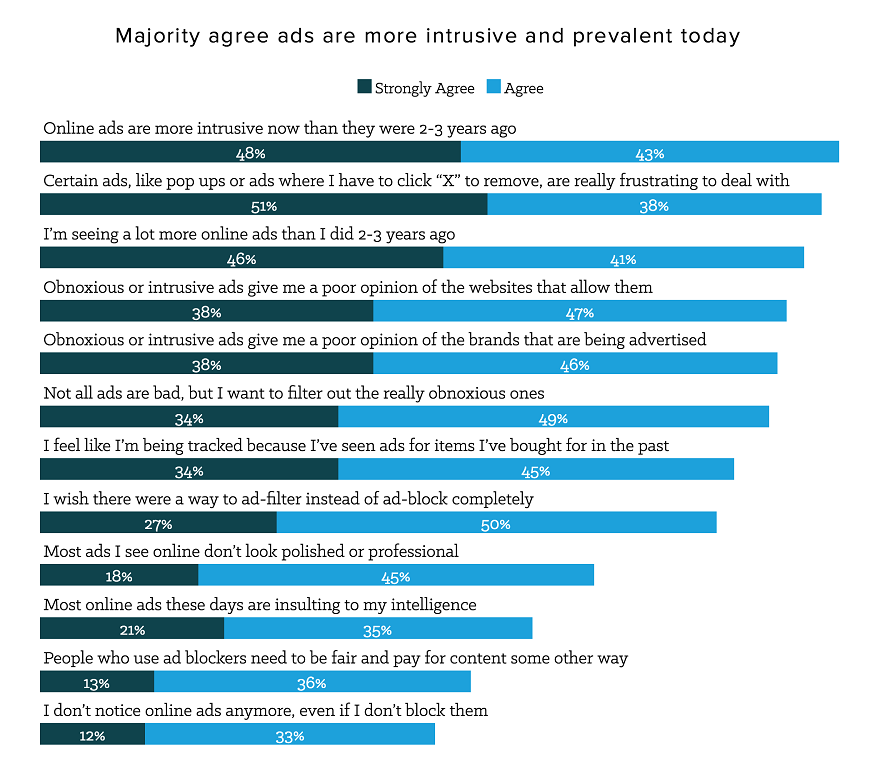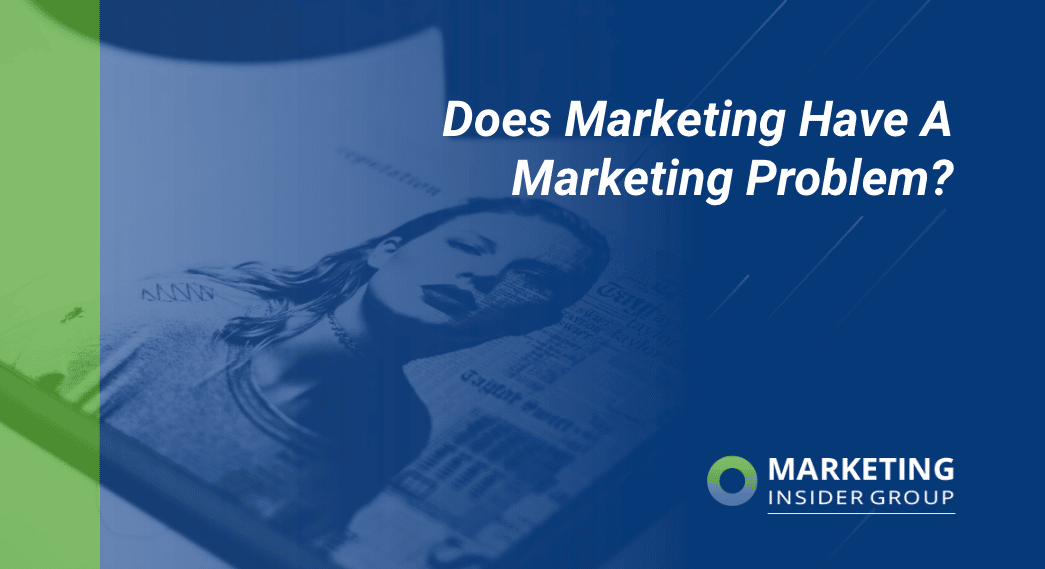
Ask most people what marketing is and they will describe an ad, tell you a story of a sleazy salesperson, or mention something funny they saw on TikTok.
Most people think Marketing is someone trying to sell you something. And they don’t think of it as a good thing. And to some people, marketing just equates to lying.
Marketing has a marketing problem. Marketing suffers from a poor job of branding.
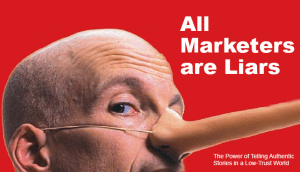
As a role, a function, a college major, marketing lacks credibility.
But marketing and selling are different things. While advertising is a form of marketing, it is not the only thing, or the biggest thing marketers do, or the thing that delivers the best marketing results.
It’s time that marketers understood the task before them.
For decades marketers were asked to tell the world “buy our stuff” and “Our products are awesome” to the most people with the highest frequency possibly. We measured our success according to whether you’ve maximized your budget for reach and frequency.
Many CMOs still measure their success based on the size of their budget, and the awareness of their brand. After all, who can blame them? But executives in most organizations are demanding more from us. They want accountability, measurement, and ROI.
In the coming years, Marketing will go in 2 distinct directions:
- Marketing will become recognized as a strategic function and a driver of revenue for companies
- Marketing will be relegated to projects, tasks, and campaigns that can be outsources to an agency
Which direction will you take?
Here are 5 reasons why Marketers must start to take some action:
1. The Internet Changed Everything
As the internet started to take shape, companies turned their fancy corporate brochures into fancy corporate websites. But their function was the same. Here is who we are, what we sell and why we are better. Traditional advertising campaigns from the 1950s and 60s were translated into banner ads which was fine when click-through rates saw double digit percent. Today, we see banner ad click through rates averaging .06%. Banners have 99 problems and click ain’t one!
Back in 1994, Search engines were this cool new thing where anyone, anywhere could access all the information they could want. Social media became a way for everyone all over the world to become connected. Smartphones combined these 2 technologies into the palm of our hand.
With so much fun stuff to do on our phones, we started to ignore boring and self-serving banner ads on websites and television.
That is why 80% of CEOs are unhappy with the job marketing is doing.
So what is marketing going to do now?
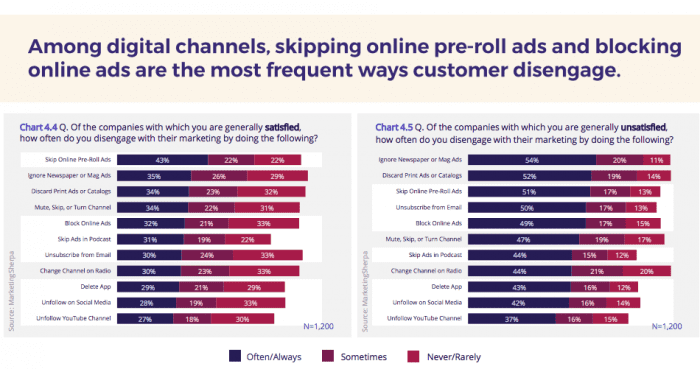
Source: SmartInsights.com
2. The Content Marketing Imperative
This was the title of a presentation I was giving about 10 years ago. I probably delivered a version of this presentation 100 times, in 20 different places. The main point:
The world has changed, most marketing stinks, and as marketers, we need to create content that attracts and converts new buyers based on helpful information. That is the content marketing imperative.
3. The Battle for Customer Attention.
This is the title of another presentation I delivered all over the world. Helpful content, Thought Leadership, and brand storytelling are the new game for marketers. We need to attract buyers instead of trying to buy them with ads and promotion no one wants.
For a long time, at some businesses, marketers have simply executed the tactics, checked the boxes and collected a paycheck. But those days are quickly coming to an end, and businesses need to understand how to reach their customers in today’s attention-starved world.
4. Marketing is a Conversation
I have always defined marketing as a conversation between a customer and a company. A 2-way dialogue where the most important thing is the feedback you get. Speak an ugly lie and your audience will reward you with anger. Tell a powerful story, share an interesting fact, solve a real problem, and your audience pays you with their attention and focus.
Good marketing today looks a lot more like publishing, requiring a strategy, customer-focus, and great writers, someone to share it and someone to measure the results.
The best marketers today have moved past just “pushing product” into emotional storytelling.
We know that behind every visit, share and purchase is a person, and we need to meet the needs of those people in the most human way. At the same time, we need to measure our results, not just on conversions, but also in the rankings and traffic we earn with organic search.
The best marketing today starts with an understanding of the keywords used and the questions asked by an audience.
5. Marketing Must Earn Respect
Serving customers serves the business. Your customers want stories, not ads. Marketing-led companies would focus on meeting customer needs through products of course, but also with the marketing that they produce.
This belief increases innovation and experimentation. Products become better and employees become more engaged in helping customers solve a problem, telling their stories and sharing them online. Customers then buy more and feel better about their purchases.
This is the promise of today’s marketing-led company.
Ask your executive team how much they value customer insights. Ask your leaders what role marketing could play in setting the strategy. Customer insights lead to better customer experiences. Product innovation moves faster, employee engagement goes up, sales increase and maybe, finally, marketing earns some respect.
As I’ve said so many times, “we all know the world has changed due to digital, social and mobile technologies. Our customers are tuning out ineffective marketing content. Content marketing is an imperative because it represents the biggest gap between what brands produce and the content our customer actually want.”
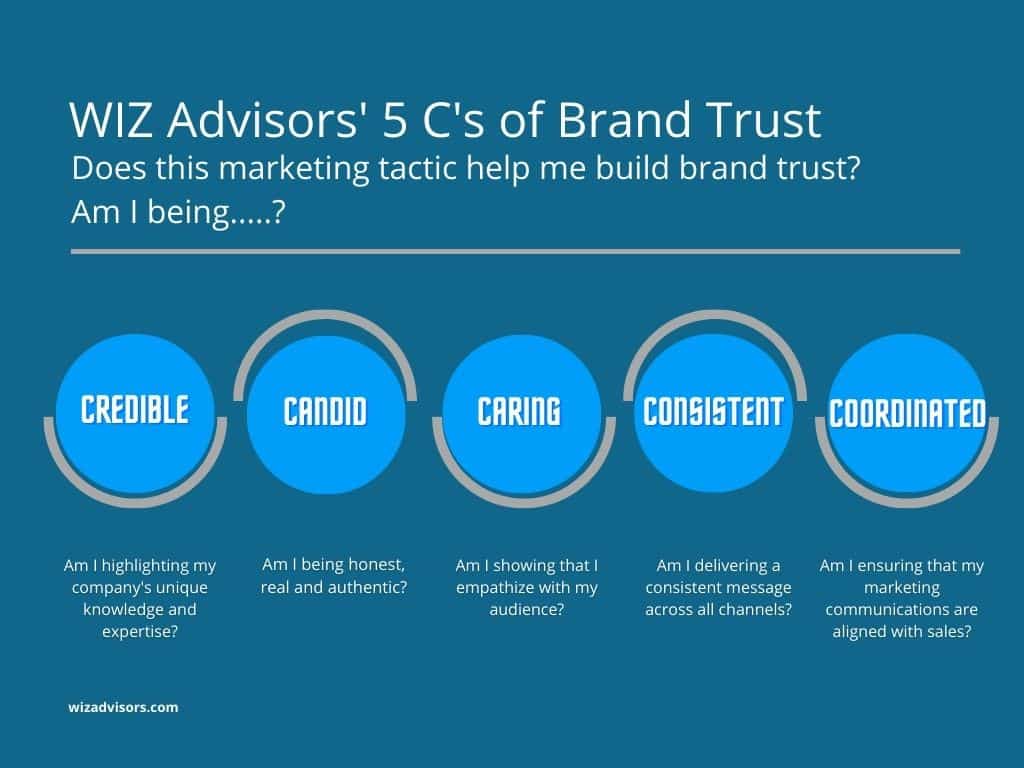
Source: Wiz Advisors
How To Fix Marketing’s Marketing Problem
Customer and Results-Focused Marketing Strategy
How do we do that? Start by understanding the keywords your audience is using, the questions they are asking, the challenges they are facing, the topics that matter most, the trends in the industry. Notice none of these have anything to do with your product. Then align this research with the marketing content and campaigns you are creating.
Every marketing activity must be aligned with something that matters to your customers.
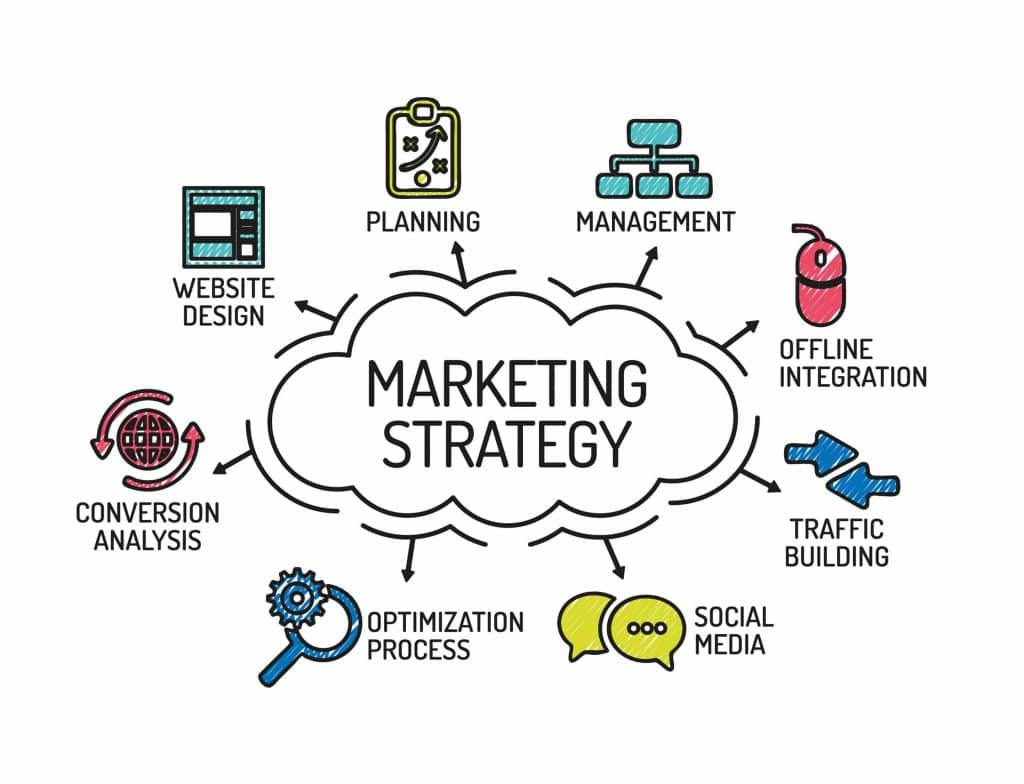
Source: ThreeGirlsMedia.com
Building a Business Case for Better Marketing
Do you rank for the keywords identified above? Most executives and sales people understand the importance of search because they actually talk to customers. How well do your marketing campaigns deliver ROI.
Your company leaders wants to see ROI from Marketing, But those same people are the ones asking you to do marketing things that don’t deliver marketing ROI. The business case for better marketing is to reach, engage, convert and retain new buyers to your business in a way that is more affordable and more efficient than you have in the past.
That means delivering content that drives conversions, and removing unnecessary campaigns based on executive whims.
Marketing Leadership
In my book, Mean People Suck, I talk about the art of the pushback. The pushback is about saying no to bad content ideas and bad campaign concepts. It means stop doing what doesn’t work – even if it means you lose that sports stadium sponsorship budget.
CEOs don’t want CMOs who just say yes to every request. They want marketers who are leaders. Show ROI, present customer insights, drive innovation, activate your most engaged employee storytellers.
Focus on Demand Generation Strategies The Deliver Leads and Revenue
The most effective revenue and demand generation strategies all have one thing in common: they are always-on. By continuously publishing your content and pushing campaign messages consistently, you get to see what works and what doesn’t. You can stop the things that don’t resonate. Double down on the things that convert.
While working at one major technology brand, I was able to deliver 10x the marketing ROI with an always-on content campaign than all the rest of marketing, with only 20% of the budget!
Measure and Present ROI
We have to know how to measure marketing ROI. But we also need to know how to present it to senior leaders who don’t care about our tactics. Telling stories is one of the most basic, and under-taught lessons in the entire business world.
Marketing Is Awesome
I spent nearly my entire career in marketing. I never imagines this journey when I started. But I became a marketer because I was frustrated with the support I received as a salesperson. I succeeded as salesperson by listening to customers. And I followed that same path as a product and corporate and content marketer.
Marketing is awesome because we get to lead our companies in focusing on our customers – attracting new ones, retaining the best ones, driving innovation.
But we need you to help us achieve this vision. What do you say. Are you ready?
Fixing the marketing problem marketing has isn’t going to be easy. But we are helping clients do it every day by delivering ROI-producing content plans that we have tested and proven to work. We align them with the specific needs of your company and audience to create a personalized strategy that drives results.
If you are ready to get more traffic to your site with quality content published consistently, check out our SEO Blog Writing Service or schedule a quick consultation to learn more about how we can help you earn more traffic and leads for your business.
The post Does Marketing Have A Marketing Problem? appeared first on Marketing Insider Group.


